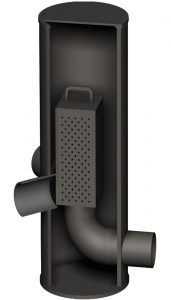Rainwater
harvesting system, known also as rainwater catchment structure or rainwater
collection system where the water is collected and stored for human use. The
system of catching rainwater ranges from using the simple rain barrels to
something more elaborate where pumps and tanks are used methodically involving
one purifying system. Here the nonpotable water can very well be used for
flushing toilets, launder clothes, irrigating landscaping, washing cars, even
this water can be used for human consumption. For all those densely populated
areas water scarcity is a big problem, rather a pressing problem. Rainwater harvesting helps in supplying household water and commercial establishments
during the dry seasons only to reduce the increasing demand of water which
the municipal system fails to render from time to time.
Striking Phenomenon
Rainfall is irregular and even in global
precipitation is limited for easy availability for human utilization, proper
rainwater harvesting provides an efficient means to capture rainwater. It is seen that in cities, rainwater falls on
number of roofs, buildings, roads, and other critical landscapes, this rainwater
hardly gets the chance to percolate into the soil, rather this rainwater
reaches storm sewers for disposal. Impermeable surfaces pave way for urban
flooding in varying areas thus generating impurity for unusual water which is
taken away from the potable water resources. All throughout the dry months, local
groundwater deplete with time and number of localities are striving constantly
to offer sufficient drinkable water to meet demand. Rainwater harvesting is one of the best solutions
for nonpotable functions, for example, the consistent pressure on stormwater
infrastructure and demand for total fresh water lessens suitably
Knowing about
the System
However, the effortless and simplest systems
for harvesting are out and out nonpressurized for example rain barrels where
the pipes are seen to run from rain gutters into the tanks. They are identified
as the “dry systems,” these structures hardly hold any water in these pipes and
they are not at all the breeding grounds for other insects and mosquitoes. Then
there are wet systems and they are required when the pipes are hard to
configure to run straightway into the tanks. In different places where the tanks
are situated away from the collection
surfaces and there will be a series of tanks to offer many buildings and pipes
from the gutter going underground and then going up into the tank. These
systems are sometimes pressurized so that long runs of pipes hardly preserve
any stagnant water.


.jpg)



No comments:
Post a Comment